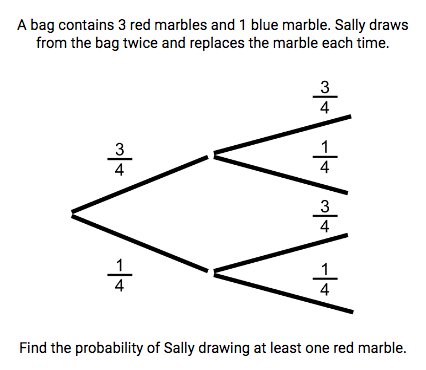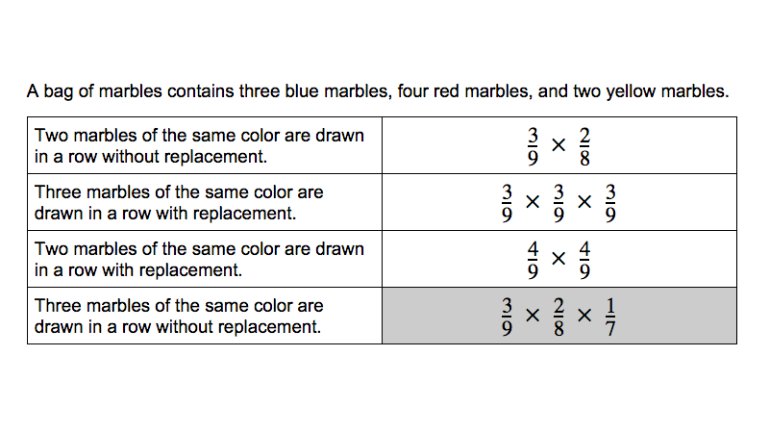Evidence of Understanding
- compare probabilities of different events occurring and describe their effect on each other
- categorize and justify if/when events are mutually exclusive (when the probability of the events occurring simultaneously is 0), dependent (including both unions and intersections of sample spaces), or independent
- analyze and relate the multiplication rule and addition rule to the sample space and relationship between events
- show that events are independent if and only if the product of their probabilities is equal to the joint probability of the events occurring
- articulate how one event affects a subsequent event (conditional probability) when events are independent or dependent
- explain how the correct probability formula describes a desired operation/analysis on the sample space
- categorize and justify if/when events are mutually exclusive (when the probability of the events occurring simultaneously is 0), dependent (including both unions and intersections of sample spaces), or independent
- use probability to predict and evaluate outcomes and expected values of decisions
- determine which probability formula should be used to predict outcomes for a given context
- apply probability rules to a given context and interpret the meaning of the outcomes within that context
- (+) weigh the possible outcomes of a decision by assigning probabilities to payoff values and finding expected values.
- calculate the expected payoff for a game of chance
- Example: find the expected winnings from a state lottery ticket or a game at a fast-food restaurant
- use probability and outcome values to justify the fairness of a particular system (and if necessary can make recommendations to make the system more fair)
- evaluate and compare strategies using expected values
- Example: compare a high-deductible versus a low-deductible automobile insurance policy using various, but reasonable, chances of having a minor or a major accident
- explain whether a model is consistent with results from a data-generating process
- Example: a model says a spinning coin falls heads up with probability 0.5. Would a result of 5 tails in a row cause you to question the model?
Develop conceptual understanding:
mutually exclusive, independent, dependent, multiplication rule, addition rule, conditional probability, fairness, expected valueSupporting terms to communicate:
if and only if, sample space, frequency, event space, complimentary, expected value, possible outcomes, simultaneous, union, intersection, permutation, combination, disjoint, compound




